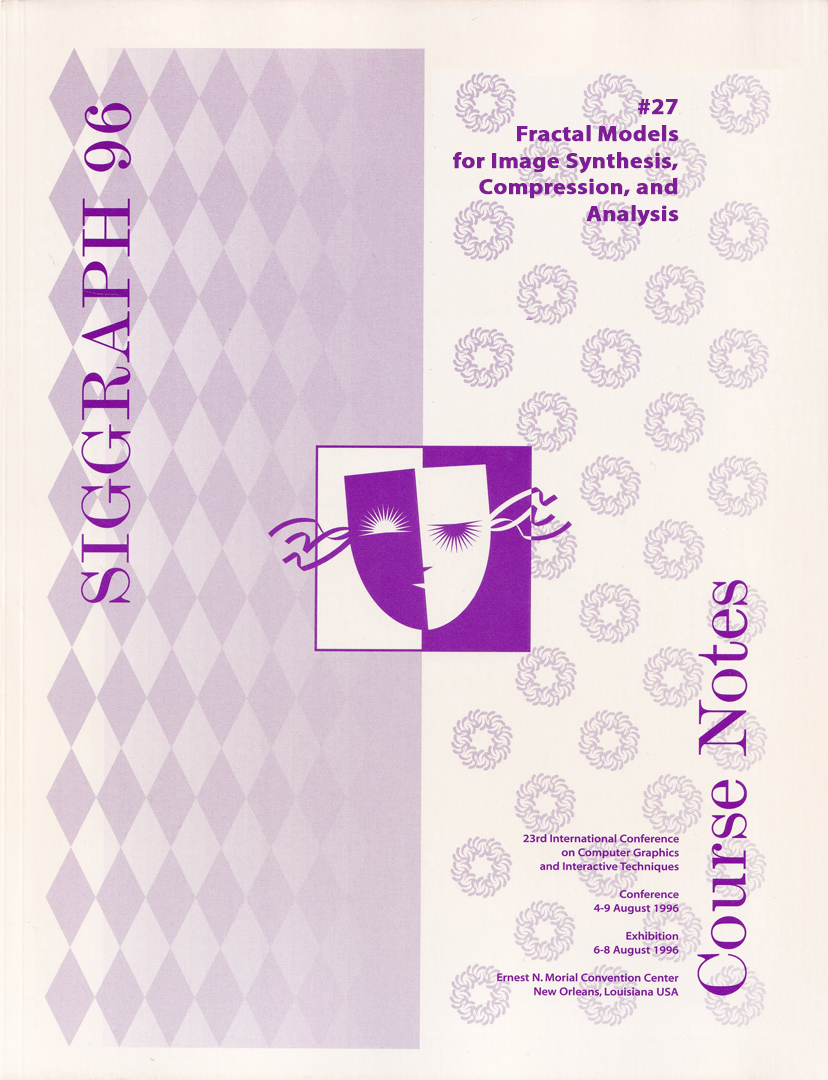“Fractal Models for Image Synthesis, Compression, and Analysis” by Hart
Conference:
Type(s):
Entry Number: 27
Title:
- Fractal Models for Image Synthesis, Compression, and Analysis
Course Organizer(s):
Presenter(s)/Author(s):
Abstract:
Description
The term “iterated function system” (abbreviated: IFS) was coined in [Barnsley & Demko, 1985] to describe a general framework of dynamics. However, most of the results about the IFS model were presented in [Hutchinson, 1981]. None of the theorems or proofs in this chapter are due to the author. However, the wording, layout and techniques used to make these theorems and their proofs coherent within a single chapter are new. Two examples: First, the proof of Theorem 1.4 is based entirely on the second half of the proof of the Blaschke selection theorem found in [Falconer, 1985]. Compare this short proof to the five part, two page proof of Theorem 2.7.1 in [Barnsley, 1988]. Second, the definition of “overlapping construction” from [Barnsley, 1988] only applies to connected sets and requires a dif- ficult code space argument. Here, its definition is extended and uses only the simple terminology of metric spaces. The term “iterated function system” is defined far from the beginning of the chapter. This placement makes it easier to explain why this definition may differ from definitions by other authors. Immediately following it is the proof that every IFS specifies a unique set, called its “attractor.” This theorem is titled the “Fundamental Theorem of Iterated Function Systems,” for it is the attractors that make iterated function systems interesting.
Contents/Schedule PDF:
Contributed By:
- Maxine Brown
Location:
- In the collection of Maxine Brown




